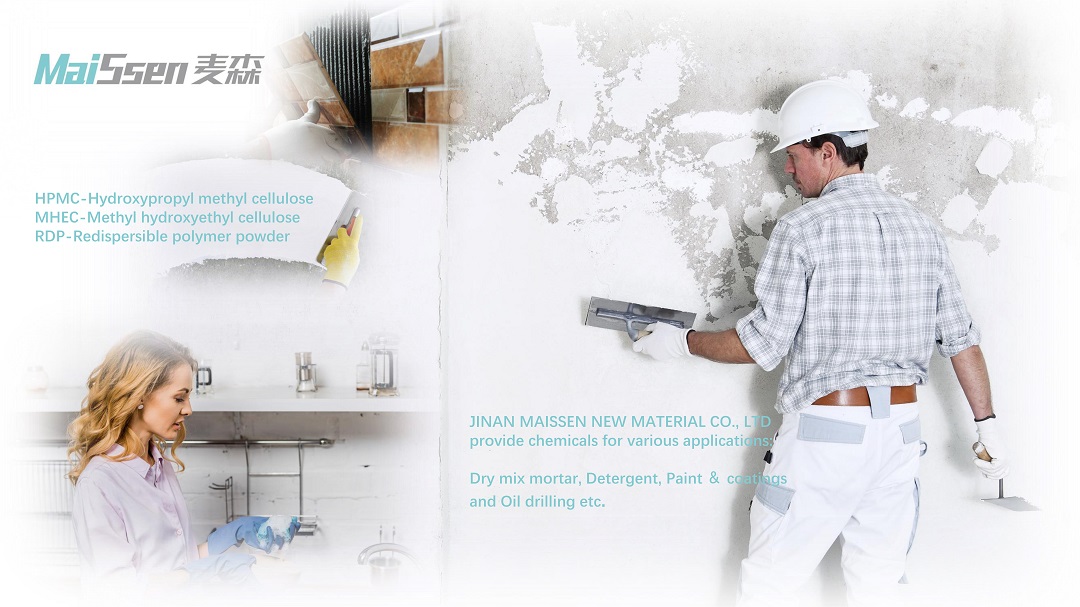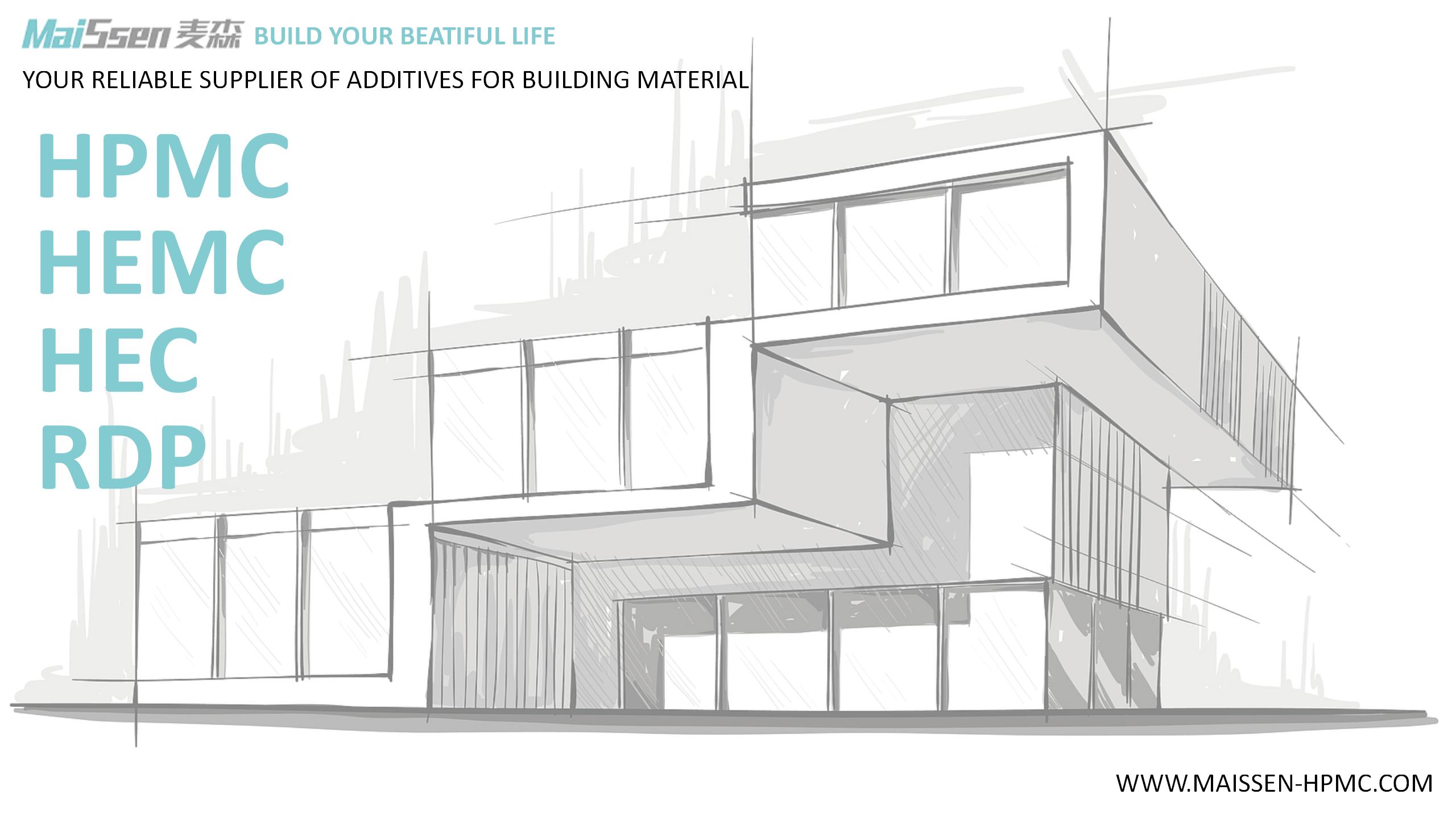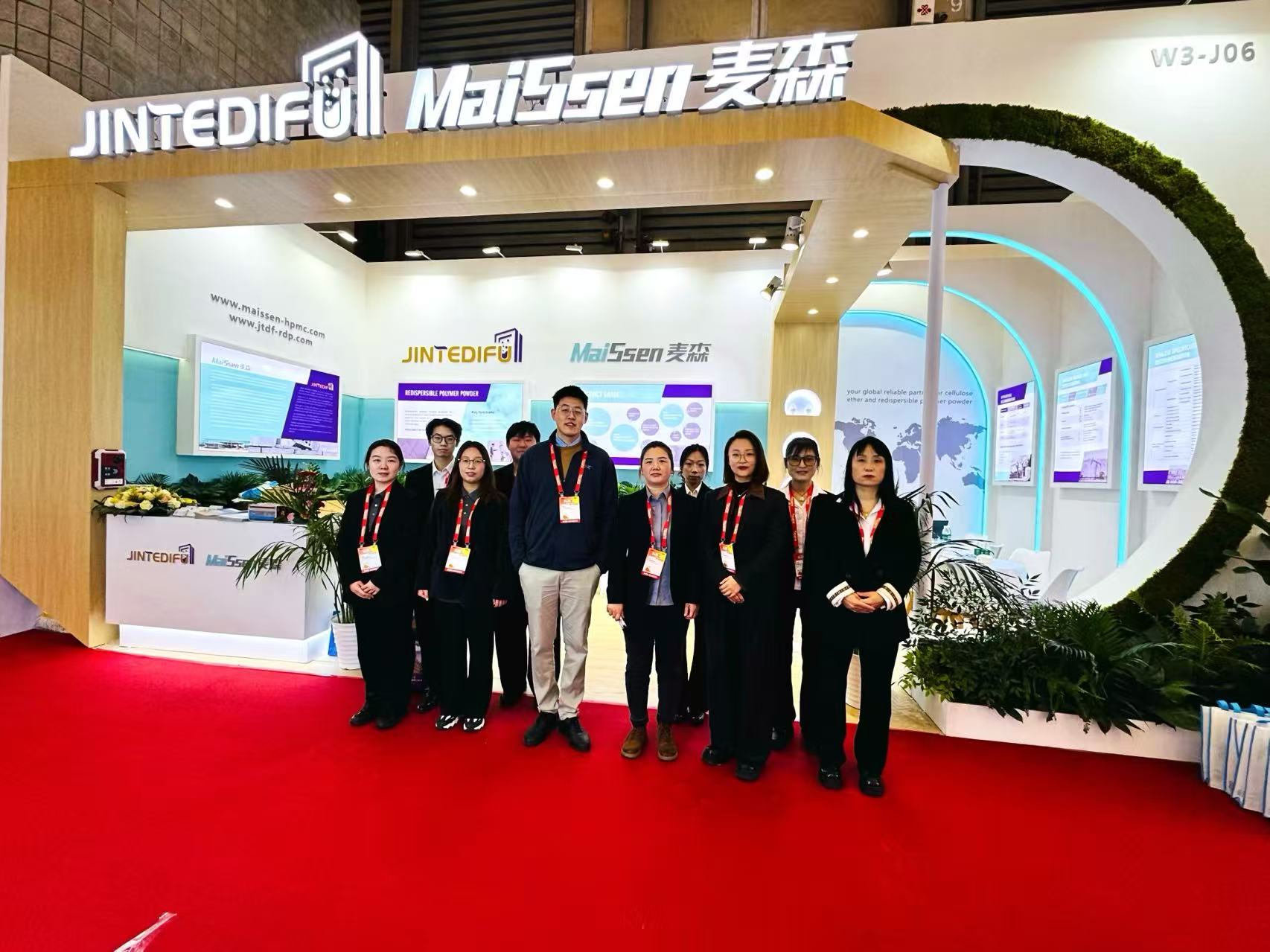CELLULOSE ETHER USES IN DRY MIX MORTAR
Overview:
Cellulose ether is a kind of cellulose derivative, could use in various applications based on its unique properties. HPMC hydroxypropyl methylcellulose and MHEC methyl hydroxy ethyl cellulose are most widely used in dry mix mortar industry, paint and coatings, detergent and oil drilling.
In China, the main raw material of cellulose ether is refined cotton. Main production process including: raw materials preparation, Alkalization and etherification, desolventize and post-processing.
Jinan maissen new material co.,ltd insist on using high quality raw materials to provide stable quality HPMC and MHEC to the international market.
Cellulose ether HPMC(hydroxypropyl methyl cellulose) and MHEC(Methyl hydroxy ethyl cellulose) in dry mortar:
The water retention of cellulose ether(HPMC,MHEC) comes from its own solubility and dehydration. Although the molecular chain of cellulose contains a lot of hydroxyl groups with strong hydration properties, it is not soluble in water, This is because the cellulose structure has a high degree of crystallinity.The hydration capacity of the hydroxyl group alone is not enough to break the strong hydrogen bonds and van der Waals forces between molecules.So it only swells and does not dissolve in water,When a substituent is introduced into the molecular chain, not only the substituent breaks the hydrogen bond, but also breaks the hydrogen bond between the chains due to the wedging of substituents between adjacent chains. The larger the substituent, the greater the distance between the molecules. The greater the effect of breaking the hydrogen bond, after the cellulose lattice expands, the solution enters, and the cellulose ether becomes water-soluble, forming a high-viscosity solution.
(1)Water retention in dry mortar:
· The water retention of dry mortar depends on the dosage of cellulose ether(HPMC and MHEC). Water absorption of the surface base, dry mortar formulation, thickeness of mortar, water demand of the mortar and setting time etc decide the dosage of cellulose ether.
- The dosage of cellulose ether can effect on the water retention of dry mortar. In same dosage, the water retention increase with the viscosity increasing; The dosage and viscosity are higher, the water retention of mortar will go up accordingly. When the dosage is over 0.3%, change is not significant. PS: in room temperature, if work in high temperature evironment, the dosage should be high accordingly.
- The water retention is related with the temperature. Cellulose ether(HPMC and MHEC) viscosity decline when the temperature increase, If the temperature of mortar is over 40℃, it need to adjust the dosage of cellulose to keep the water retention.
(2)The influence of cellulose ether on the consistency of mortar:
-Good consistency is mainly achieved by the viscosity and particle size of the cellulose ether(HPMC & MHEC).
-Consistency of mortar increase when increase the dosage or increase the viscosity.
(3)Influence of cellulose ether(HPMC/MHEC)on air content of mortar:
In dry-mixed mortar products, due to the addition of cellulose ether, a certain amount of tiny and evenly distributed air bubbles are introduced into the freshly mixed plaster mortar. Due to the main effect of air bubbles, the mortar has good construction performance and reduces the cost of the mortar. Shrinkage and cracking increase the output rate of mortar.
(4)Influence of cellulose ether(HPMC/MHEC) on cement hydration:
Cellulose ether has a retarding effect on the hydration of cement-based mortar, and the retardation effect increases with the increase of the amount of cellulose ether added. The influencing factors of cellulose ether on cement hydration are the dosage, the degree of etherification and the type of cement.
(5)Influence of cellulose ether(HPMC/MHEC) on bonding strength of mortar:
In addition to cement, gypsum, calcium hydroxide, and redispersible latex powder, the adhesion between mortar and substrate can be obtained by cellulose ethers.
Cellulose ether can improve the bonding strength of fresh mortar and hardened mortar. The water retention properties of cellulose ether in mortar can meet the water demand of cement and gypsum hydration reaction, thereby improving the tensile bonding strength of hardened mortar.
Different types and viscosities of cellulose ethers have very different contributions to the tensile bond strength of mortar.
Macroscopically, cement-based tile adhesive looks strong and hard. Observed from the microscope, it can be seen that the addition of cellulose ether introduces small pores, and the bonding material is linked by continuous pores. In the cement-based tile adhesive on vitrified tiles, it can be clearly seen that the adhesive is composed of an open porous structure.

Jinan maissen new material co.,ltd is the major HPMC,MHEC and RDP manufacturer in China.
Supply high quality chemical additives used in dry mix mortar industry, main products include:
HPMC-hydroxypropyl methylcellulose
MHEC-methyl hydroxy ethyl cellulose
RDP-redispersible polymer powder
website: www.maissen-hpmc.com
email: info@mailose.com







